Feature
The Nurses of World War II
On hospital ships, cargo planes, and in jungle tents behind combat lines, tens of thousands of brave nurses risked their lives in U.S. military service.
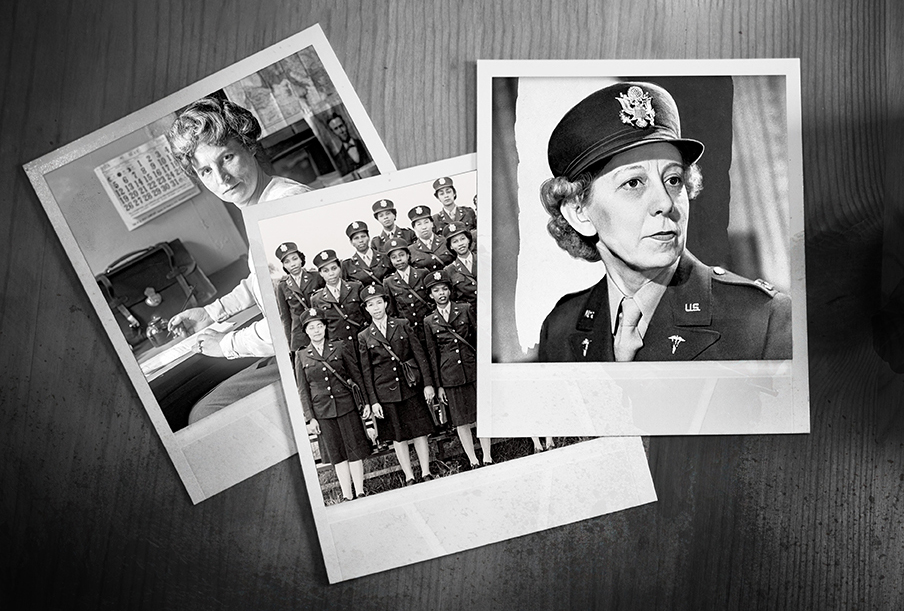
ON THE MORNING OF DECEMBER 7, 1941, First Lieutenant Annie G. Fox was making her rounds at the modest 30-bed Station Hospital in Pearl Harbor, Hawaii. A dedicated member of the Army Nurse Corps since 1918, she had risen to the position of chief nurse at age 47, and had just arrived at the sleepy Pacific outpost the month before.
 At 7:48 a.m., the morning tranquility was shattered by the sound of explosions. Aircraft of the Imperial Japanese Navy had launched a surprise attack on the U.S. Pacific Fleet.
At 7:48 a.m., the morning tranquility was shattered by the sound of explosions. Aircraft of the Imperial Japanese Navy had launched a surprise attack on the U.S. Pacific Fleet.
Hospital staff watched in horror as Japanese warplanes streaked overhead, flying so low that the nurses could see the pilots in their cockpits. Each new attack wave was followed by deafening explosions and billowing black smoke. Bombs exploded less than 100 yards away.
Within minutes, the hospital was flooded with American casualties. As head nurse, Fox took charge and coolly organized the hospital’s response, rallying her small staff and even recruiting servicemembers’ wives to help.
In October 1942, Fox was awarded the Purple Heart for her heroism during the attack. The citation explained:
She administered anesthesia to patients during the heaviest part of the bombardment, assisted in dressing the wounded, taught civilian volunteer nurses to make dressings, and worked ceaselessly with coolness and efficiency.
Fox’s Purple Heart was later replaced with a Bronze Star. She had been the first woman ever to receive a Purple Heart for service in combat, but she would not be the last.
Putting on the Uniform
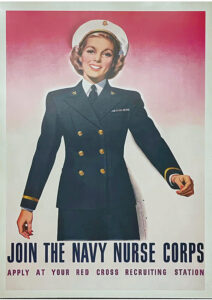 The Army Nurse Corps, established by Congress in 1901, is the nursing service for the U.S. Army; the separate Navy Nurses Corps was established in 1908. Although many nurses served during World War I, the number dwindled to a few thousand by 1940.
The Army Nurse Corps, established by Congress in 1901, is the nursing service for the U.S. Army; the separate Navy Nurses Corps was established in 1908. Although many nurses served during World War I, the number dwindled to a few thousand by 1940.
Pearl Harbor changed all that. After the attack, more than 73,000 American nurses volunteered for military duty!
Why did they join? Many were motivated by patriotism and wanted to serve their country. Others were enticed by the promise of travel and adventure. But many more just needed employment. Major hospitals were hiring very few RNs because their on-site training schools extracted free labor from their students. Some hospitals hired only one nurse per floor.
Quotas and Requirements
A volunteer for the Army Nurse Corps had to be 21 to 40 years old, a U.S. citizen, unmarried, a high school graduate and a graduate of a three-year formal nursing program, licensed in at least one state, 5’0” to 6’0” in height, and have a physician’s certificate of health as well as a letter testifying to their moral character and professional excellence. Navy requirements were similarly rigorous.
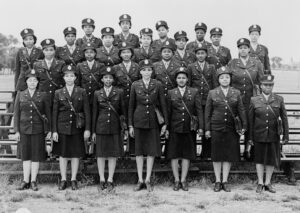 The Army Nurse Corps admitted 56 Black nurses in 1941, but they were subject to a strict quota and were mostly allowed only to care for Black patients and German POWs.
The Army Nurse Corps admitted 56 Black nurses in 1941, but they were subject to a strict quota and were mostly allowed only to care for Black patients and German POWs.
The Navy Nurse Corps didn’t commission Black nurses until 1945, the last year of the war. Neither service accepted male nurses until 1956.
Persistent Nursing Shortage
It was feared at the time that nurses entering the military would cause a shortage of staff nurses in civilian hospitals. One solution was the Bolton Act, introduced in 1943 by Ohio Congresswoman Frances Payne Bolton. This act formed the Cadet Nurse Corps, which subsidized the cost of education and room and board for students accepted to nursing programs.
Student nurses in the Cadet Nurse Corps received accelerated training and pledged to serve in the military or in an essential civilian capacity when they graduated. The program was a big success: Ultimately, 120,000 Cadet Nurse Corps graduates were trained at 1,125 participating nursing schools in just five years.
While the Bolton Act helped to shore up the supply of nurses stateside, in 1945, after four years of fighting, military nurses were desperately needed on the battlefield. Congress came within one vote of instituting a military draft for nurses — which, thankfully, wasn’t needed as the war came to an end.
Lesser Ranks, Lower Pay
Nurses who served in the Army Nurse Corps originally had only “relative” officer’s ranks, not an officer’s commission. Army nurses received considerably less pay than their male counterparts, and there was no provision for any pension.
Navy nurses on active duty earned retirement pay, but didn’t even have “relative” ranks until July 1942.
It was not until late in the war that active-duty Army and Navy nurses were given real military ranks, and even then, their commissions were considered only temporary. (Army and Navy nurses finally received permanent commissions in 1947, almost two years after the war was over.)
“Looking Like Debutantes”
Initially, the Army Nurse Corps didn’t provide military orientation or even proper equipment and uniforms for nurses.
Lt. Frances L. Nash signed up for a two-year tour of duty in the Pacific and was sent to Manilla, Philippines, where the U.S. maintained a military hospital. As Nash said in a later interview, the arriving nurses “departed the ship wearing chiffon dresses, looking more like debutantes than military nurses.”
In 1943, the Army Nurse Corps belatedly initiated a four-week formal training program for incoming nurses. They were taught military customs, army organization, field sanitation, defense against attack, requisition procedures, and personnel administration.
Nurses in the Field
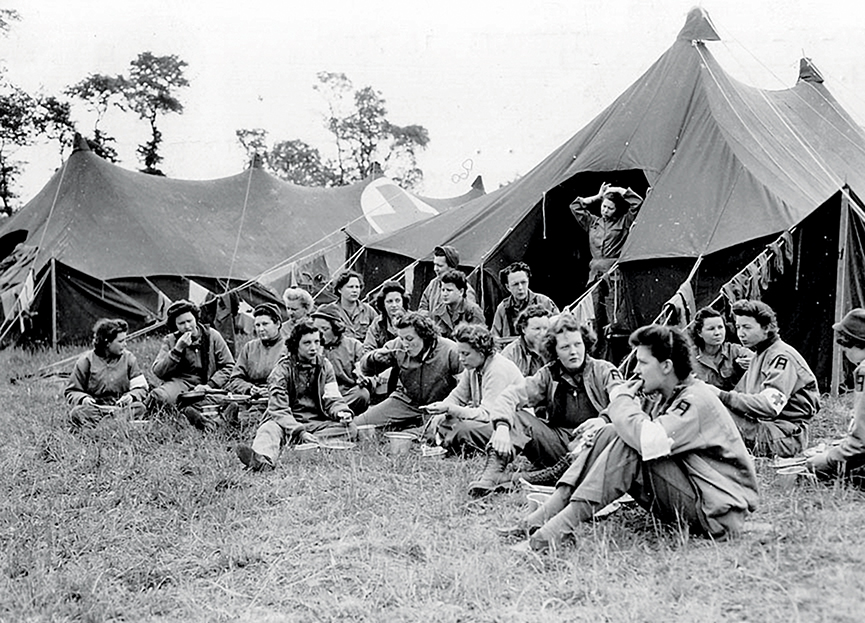 Nurses were assigned to field hospitals just miles behind the combat lines.
Nurses were assigned to field hospitals just miles behind the combat lines.
Working in tents, which they packed and unpacked themselves, their job was to stabilize and apply dressings to the injured, and administer plasma and medication before evacuating patients to hospitals further removed from the fighting.
Navy nurses worked on hospital ships, naval hospitals, and dispensaries, often acting as department heads for staffs of enlisted corpsmen. In both services, the nurses’ very presence as women “from home” was a big factor in the morale of the injured.
Flight training for the Army and Navy Nurse Corps began in 1943. Flight nurses learned crash procedures, as well as ocean, jungle, desert, and arctic survival. Their transport planes carried cargo along with personnel, which meant they were not protected by the Geneva Convention and ran the risk of being shot down by the enemy.
Anesthesia and Psychiatry
To the credit of the wartime medical staff, less than four percent of American soldiers who received care in the field died from wounds or disease. However, military nursing service pointed to a greater need for two nursing specialties: anesthesia and psychiatry.
Nurses had already provided anesthesia during World War I, and during WWII, 2,000 RNs were specially trained as nurse anesthetists, a specialty that still remains the primary anesthesia provider for the U.S. military.
There was also a special 12-week training program in caring for psychiatric patients. By working with these patients, military nurses learned valuable lessons about trauma and became nursing pioneers in the field of mental health.
Behind Enemy Lines
There is no end to the stories about these brave nurses. In December 1941, just three hours after Pearl Harbor, the Japanese bombed Manila, Philippines.
Most of the U.S. nurses stationed there were able to evacuate, but Frances Nash and her colleagues remained to treat the injured, even after their hospital was bombed and invaded by Japanese forces. Twenty-two of the 89 nurses escaped before the island fell to the Japanese, but 66 Army nurses and 11 Navy nurses were taken as prisoners of war and held until 1945.
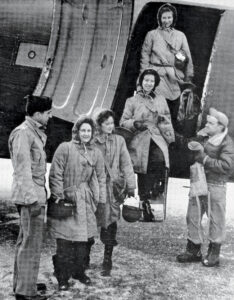 In November 1943, 13 air transport nurses accompanied by 13 medics crashed into Nazi-occupied Albania and became separated.
In November 1943, 13 air transport nurses accompanied by 13 medics crashed into Nazi-occupied Albania and became separated.
One group walked over 800 miles in just two months — seven hours a day through deep snow and over mountains to the coast — while the others were hidden in a basement by a prominent Albanian family and spent five months behind enemy lines.
Ultimately, they all escaped, but were told never to talk about what had happened to them for fear that the Nazis would retaliate against everyone who had helped them.
Eighty years later, few of these brave women are still with us. Luckily, authors Evelyn M. Monahan and Rosemary Neidel-Greenlee interviewed many former Army nurses and compiled their personal histories in a 2003 book entitled And If I Perish: Frontline U.S Army Nurses in World War II, which is gripping reading.
Arlington Cemetery
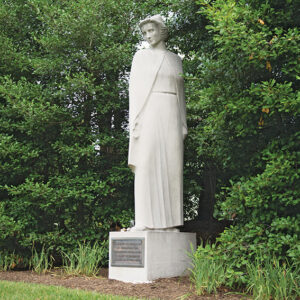 Today, hundreds of nurses who served in the U.S. armed forces are buried in a designated section of Arlington National Cemetery, dedicated in 1938.
Today, hundreds of nurses who served in the U.S. armed forces are buried in a designated section of Arlington National Cemetery, dedicated in 1938.
The 11-foot-tall marble statue that adorns the Nurses Section at Arlington was designed by artist Frances Rich, who later enlisted in the Navy WAVES (Women Accepted for Volunteer Emergency Service) during World War II.
The memorial was rededicated in 1971 with a plaque to “commemorate devoted service to country and humanity by Army, Navy, and Air Force Nurses.”
SIDEBAR
USS Higbee
by Aaron Severson
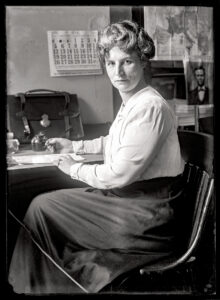 Navy nurses received an unprecedented honor in November 1944 with the launch of the destroyer USS Higbee, named for former Navy Nurse Corps superintendent Lenah Sutcliffe Higbee. It was only the second American warship named after a woman — and the first ever named for a nurse.
Navy nurses received an unprecedented honor in November 1944 with the launch of the destroyer USS Higbee, named for former Navy Nurse Corps superintendent Lenah Sutcliffe Higbee. It was only the second American warship named after a woman — and the first ever named for a nurse.
Born in Canada and trained in New York, Lenah Higbee was one of the “Sacred Twenty,” the first 20 nurses admitted to the Navy Nurse Corps in 1908. As superintendent, she led the Corps through WWI and the 1918 influenza pandemic, and was awarded the Navy Cross. Higbee died in 1941, so her sister christened the ship carrying her name.
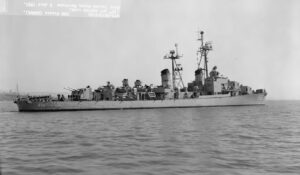
The USS Higbee served in the Pacific throughout the final months of the war. Her commanding officer presented the ship’s battle flag to the Navy Nurse Corps, declaring:
You may tell all the nurses that their ship earned her keep in fine style … without suffering a scratch or getting a soul on board hurt.
USS Higbee was decommissioned in 1979, but the Navy recently launched a new ship named for Higbee, the USS Lenah Sutcliffe Higbee, commissioned in 2023.
CHRISTINE CONTILLO, RN, BSN, PHN, is a public health nurse with more than 40 years of experience, ranging from infants to geriatrics. She enjoys volunteering for medical missions.


